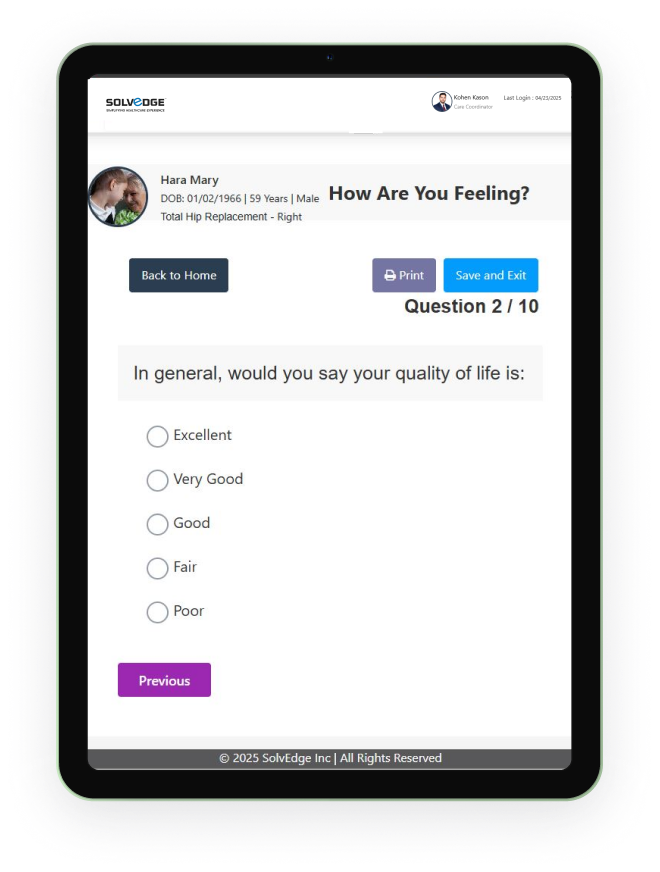Transforming Tendon Repair Outcomes Through Expert Care
Enable optimal tendon recovery with measurable progress tracking and next-gen intraoperative solutions.
Transforming Tendon Repair Outcomes Through Expert Care
Enable optimal tendon recovery with measurable progress tracking and next-gen intraoperative solutions.
Enhancing Tendon Repair Care
Patient-reported insights are key to crafting a more personalized and responsive care plan for tendon repair patients. By capturing detailed feedback throughout the healing process, healthcare providers can make adjustments that address individual needs, improving patient satisfaction and treatment effectiveness.
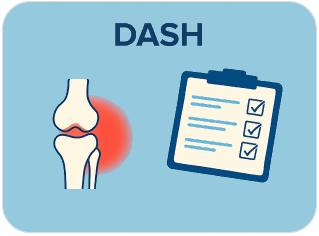
This PROM assesses overall upper extremity disability and symptoms, relevant for tendon repairs in the arm, shoulder, and hand.
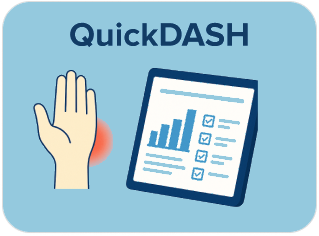
A shorter, more focused version of the DASH, also assessing upper extremity function and symptoms efficiently.
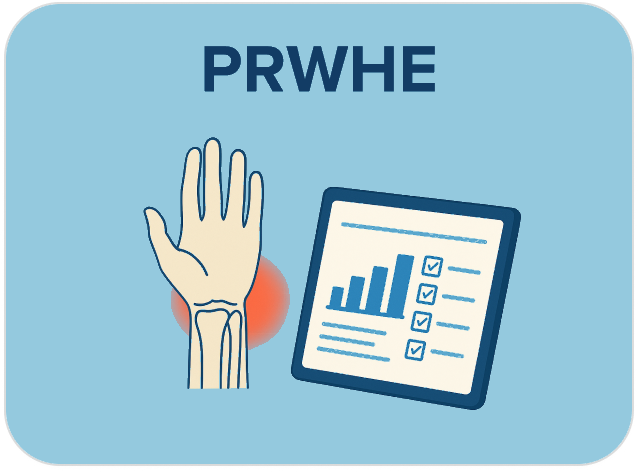
Specifically evaluates pain and function in patients with wrist and hand conditions, including tendon injuries in these areas.
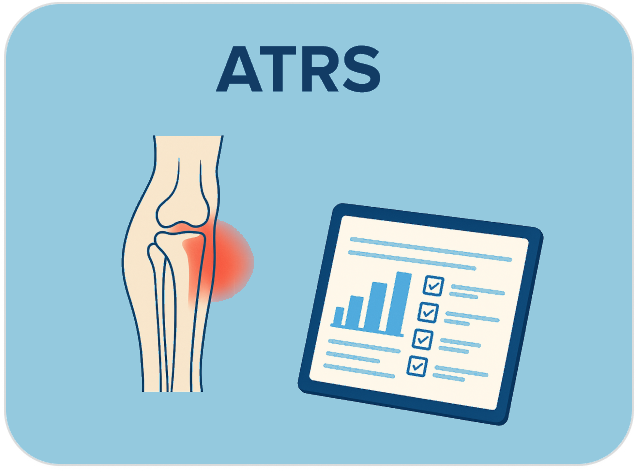
A disease-specific PROM designed to assess symptoms and functional limitations specifically after an Achilles tendon rupture and repair.
Powered suported by leading international healthcare service
Key Components for Optimal Healing
Tendon repairs often rely on various implants and materials to restore function and support healing. The choice of implant may depend on patient age, tissue condition, and activity level.
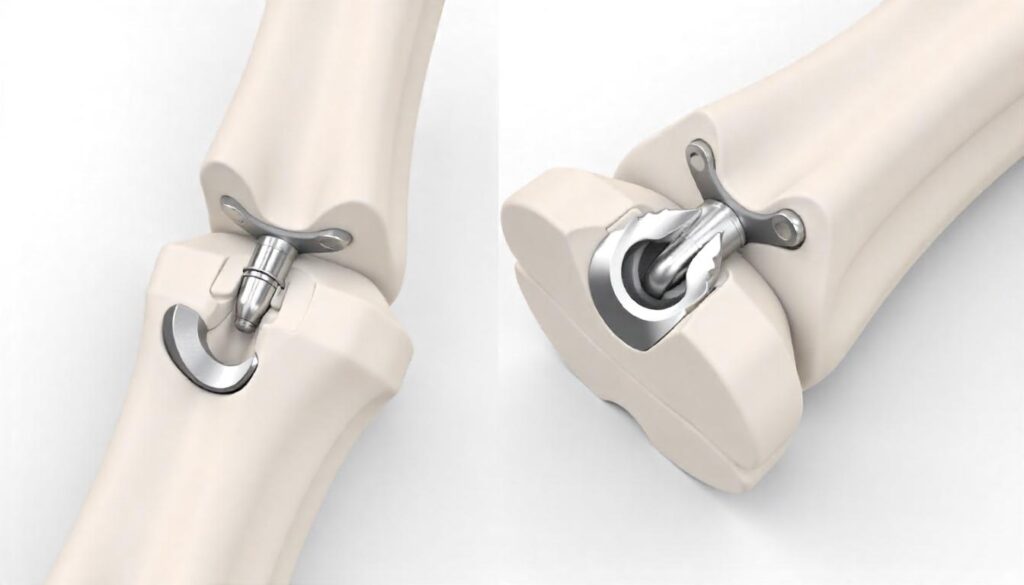
CoNextions TR Tendon Repair
Provides strong, stable tendon repair for improved function. Age isn’t a primary factor; suitability depends on the tendon injury itself.
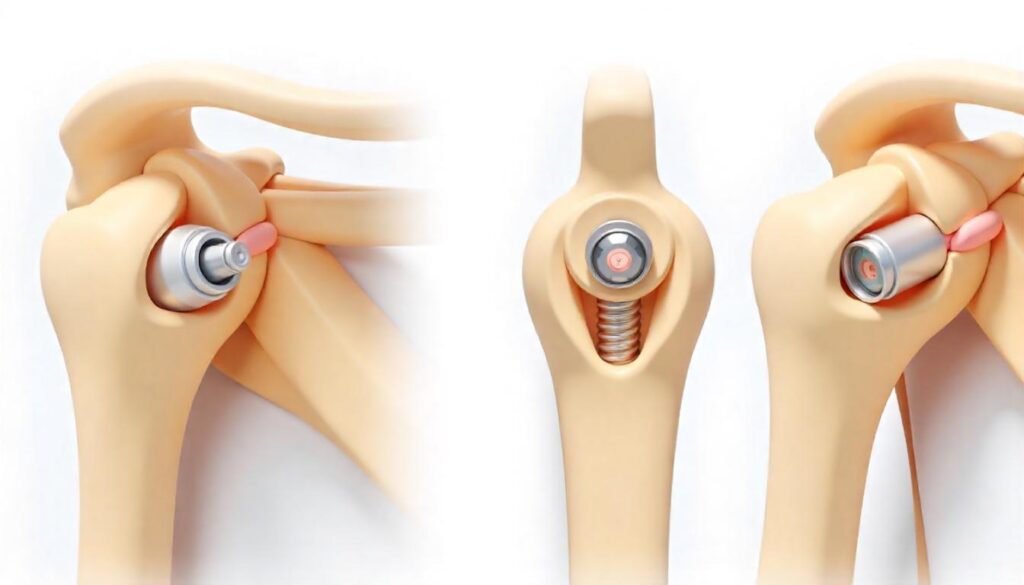
Bioabsorbable
Outcome:
Facilitate tendon healing with gradual absorption, potentially reducing the need for removal. Age isn’t a strict criterion; used based on repair needs.
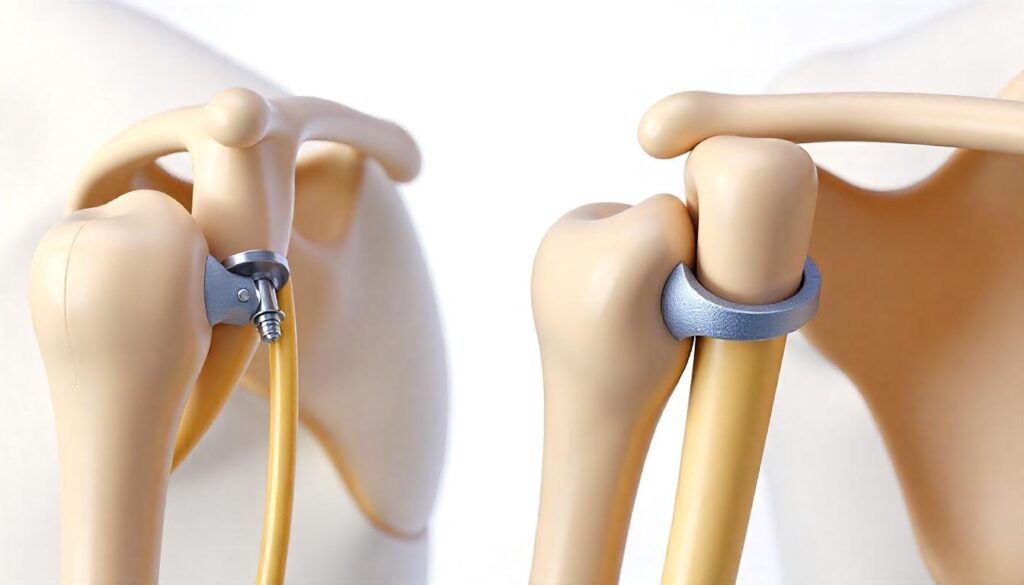
Grafts (Autograft, Allograft, Synthetic)
Outcome:
Replace or augment damaged tendons, restoring strength and function. Age can influence graft selection and healing potential.
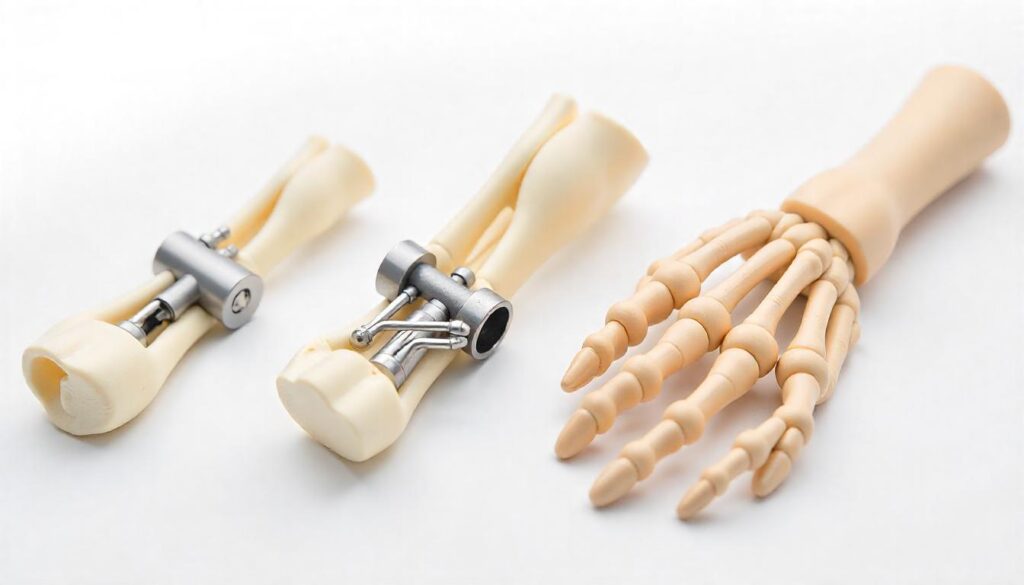
Tendon Anchors
Outcome:
Securely reattach tendon to bone, enabling early mobilization. Age isn’t a primary factor; used when tendon-to-bone fixation is needed.
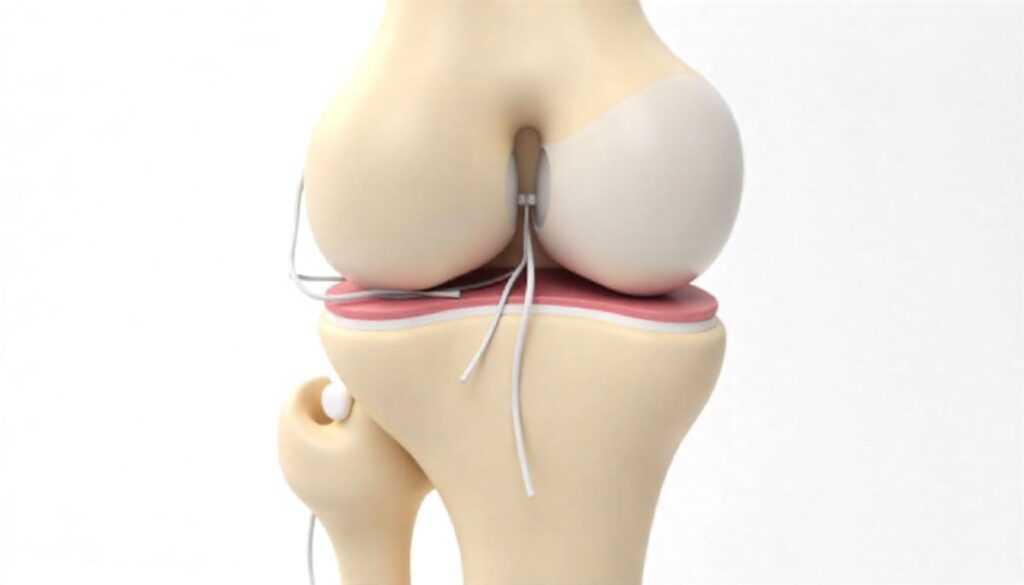
Suture Anchors
Outcome:
Provide strong fixation points in bone for sutures to repair torn tendons. Age isn’t a strict criterion; used for tendon reattachment to bone.
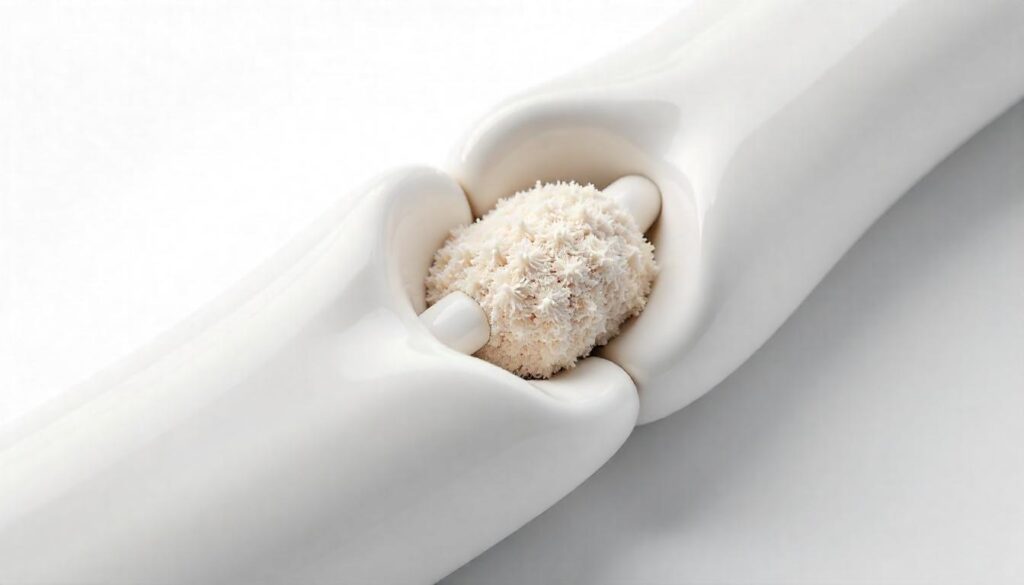
Scaffolds for Tissue Regeneration
Outcome:
Support tendon healing and new tissue growth, potentially improving long-term outcomes. Age can influence regenerative capacity.
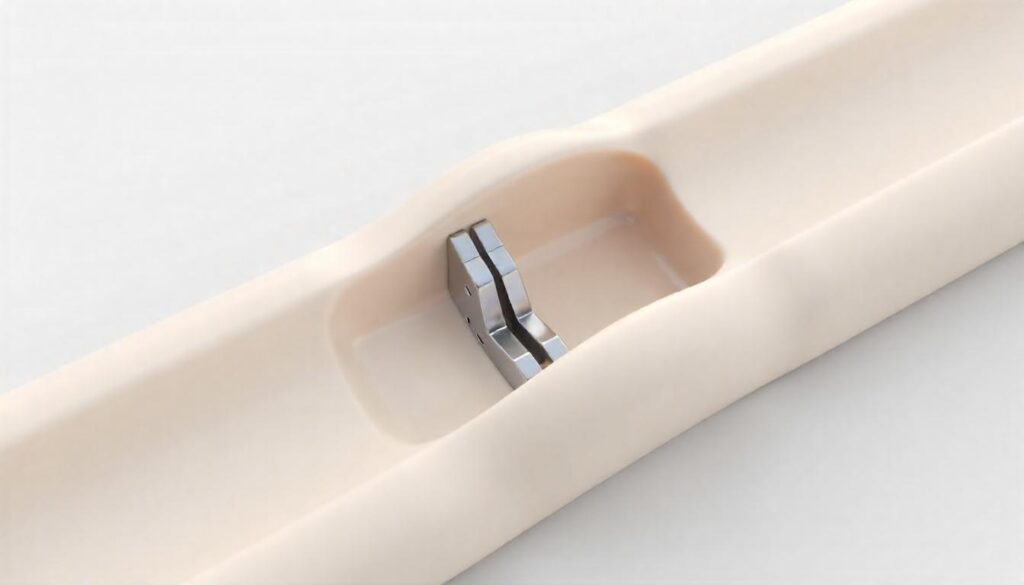
Tendon Repair Clips
Outcome:
Hold tendon ends together for healing, offering a less invasive fixation method. Age isn’t a primary factor; used based on tear characteristics.
Impact of Care Navigation and PROMs Integration
Integrating Care Navigation and PROMs transforms the patient journey in tendon repairs by providing data-driven insights and personalized care. This approach optimizes recovery times, reduces complications, and supports the patient at each stage.
Fewer Gaps Between Appointments
Patients receive proactive check-ins and digital guidance, reducing delays in care and improving overall recovery confidence.
Personalized Rehab Plans
Real-time feedback allows care teams to fine-tune exercises and recovery activities based on each patient’s actual experience, not just protocol.
Stronger Patient Engagement
patients feel more seen and heard, resulting in higher adherence to care plans and a greater sense of partnership in their recovery.
Early Detection of Setbacks
continuous monitoring helps flag potential complications sooner, leading to timely interventions and fewer escalations.
Accelerated Innovation Cycles
with more recovery data in hand, product teams can iterate faster, aligning tools and technology more closely with real-world patient needs.
Expanded Use Cases and Demand
as care teams embrace data-driven recovery support, tools designed for these pathways are increasingly integrated across more procedures and sites.
Higher Confidence in Performance
the ability to measure the patient’s voice post-procedure provides stronger evidence for effectiveness, driving adoption and long-term usage.
Collaborative Development
Opportunities Clinicians and developers align more closely, co-creating tools that address gaps in care and open doors to new clinical applications.
